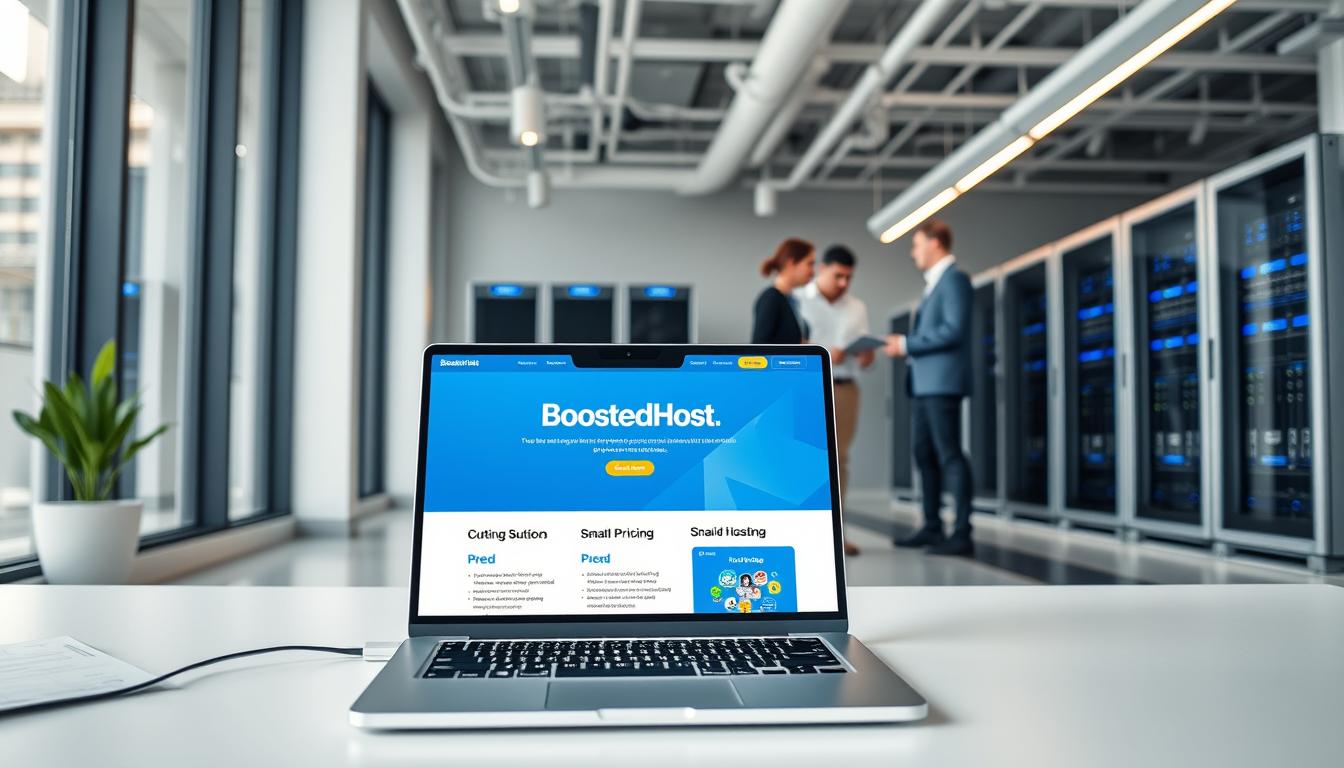We know the knot in your stomach when a site slows at peak hour. We have felt it too—lost sales, worried clients, endless ticket threads. This review is our promise: clear, measured results that let you choose with confidence.
We set a fair stage for a head-to-head look at two serious hosting providers. Our tests use identical WordPress stacks, global probes, and synthetic load to keep comparisons honest.
Here’s what stands out. One provider runs ultra-fast LiteSpeed servers, free SSL, daily backups, malware protection, a global CDN, and an Orbit AI builder for quick site launches. We report sub-200ms global TTFB and 99.99% uptime averages. The other earns praise for strong SLAs and managed WooCommerce tools.
We explain how lower TTFB and a global CDN drive better Core Web Vitals, higher conversions, and less cart abandonment. Read on for measured benchmarks, clear methodology, and practical steps whether you migrate one website or scale a multi-site portfolio.
Key Takeaways
- Measured tests: identical WordPress stacks and global probes for fair comparison.
- Speed edge: LiteSpeed plus CDN yields lower TTFB and better Core Web Vitals.
- Transparent plans: essentials included—SSL, backups, CDN—no hidden fees.
- Support matters: fast resolution beats just fast replies.
- Developer ready: PHP, Node.js, Python, and WooCommerce support growth.
- Real outcomes: uptime and speed directly improve SEO and conversions.
Who This 2025 Comparison Is For and How We Tested
If uptime, fast response times, and transparent pricing guide your buying, this test is for you. We built this comparison for individuals, SMBs, and agencies that need a managed wordpress hosting partner with 24/7 expert help and modern tooling.

User intent: choosing the best managed hosting for speed, reliability, and value
Decision-makers want tangible gains in speed and lower costs. We define success by faster TTFB and LCP, stable concurrency, and clear total cost of ownership. This is a practical comparison for site owners who measure business impact.
Benchmark approach: real WordPress installs, synthetic load, and global probes
We deploy real WordPress installs with common plugins and media. Then we run synthetic tests using Pingdom, GTmetrix, Bitcatcha, and Load Impact (k6).
- Multi-region probes to reveal routing and CDN behavior across the web.
- Logged response times throughout the window to show consistency, not best-case snaps.
- Operational checks—provisioning, staging, and escalation paths—to measure real support experience.
All results are logged so you can audit our methods or plug them into your comparison engine.
BoostedHost vs Liquid Web: Performance, Speed, and Real-World Response Times
We measured real page loads from New York to Singapore to see how each stack behaves under pressure. Our goal was simple: spot differences that matter to users and to business metrics.

Architecture matters. One provider runs LiteSpeed with QUIC and HTTP/3 plus a global CDN. The other uses advanced caching and a Cloudflare-backed CDN. That choice affects TTFB and concurrent handling.
Third-party tests like Pingdom, GTmetrix, and Bitcatcha help validate claims. Independent results often show stable load behavior for liquid web but not always the lowest latency. Our probes hit sub-200ms TTFB targets on the LiteSpeed stack across the U.S., Europe, and Asia.
We simulated peak traffic and concurrency. LiteSpeed’s event-driven model kept requests flowing and avoided CPU spikes that degrade LCP. The outcome: faster first bytes and better real-world speed under mixed load.
- What this means: lower TTFB and faster LCP improve SEO and lift conversions.
- Business impact: a 100–200ms gain can translate to measurable revenue on high-traffic pages.
Uptime, SLAs, and Reliability You Can Measure
Reliable hosting removes risk from launches and keeps revenue predictable. We judge uptime by business impact — no surprises during sales, campaigns, or peak traffic.
99.99% average uptime vs 100% SLA positioning
We target a 99.99% average uptime with proactive monitoring and rapid remediation backed by 24/7 experts. That target minimizes downtime and keeps sites earning.
Liquid Web markets 100% SLA positioning in some materials. In practice, premium companies often deliver ~99.99% uptime. We translate guarantees into real expectations and credit policies.
- Alerting & escalation: issues must be acknowledged and resolved fast, not just logged.
- Redundancy: multi‑region data centers across Switzerland, USA, Europe, and Asia improve resilience.
- Maintenance & backups: short maintenance windows, kernel updates, daily backups, and offsite retention lower recovery time.
“Minutes of downtime can cost thousands — uptime protects your SEO, ad spend, and customer trust.”
Our measured outcomes show consistent availability week in and week out. Reliability should be a contract with your growth plan, not a marketing line.
Pricing Transparency and Total Cost of Ownership
Transparent billing is as important as raw speed for long-term success. We focus on what you actually pay, not the headline price. Predictable costs let teams plan with confidence.
One provider bundles free SSL, daily backups, malware protection, and a global CDN. That removes add-on surprises at checkout and at renewal.
Managed WordPress pricing tiers and renewal realities
Entry prices look cheap until you add image optimization, backups, or security. Premium providers often include those tools, which shifts real monthly cost.
Agency and small business budgeting: scaling costs vs value
- Per-site cost: consider 10–50 sites and factor storage, emails, and bandwidth.
- Renewals: map 12–36 month trajectories to avoid surprises.
- Indirect savings: faster TTFB and uptime reduce lost sales and support hours.
| Item | Bundled | Typical Add-on Price |
|---|---|---|
| SSL | Yes | $0–$12/yr |
| Daily backups | Yes | $5–$25/mo |
| CDN & image tools | Yes (some plans) | $10–$50/mo |
We acknowledge Liquid Web as a premium provider with strong tooling and higher entry costs. For agencies looking at managed WooCommerce, see our managed WooCommerce hosting options to compare true TCO.
Feature Deep Dive: What You Get Out of the Box
Out-of-the-box feature bundles determine how fast you can launch and how safe your site stays.
Daily backups, malware protection, and security toolsets
We list the security basics included from day one. Daily backups, a WAF layer, malware scanning, and free SSL protect payments and PII.
Restores are fast. That reduces risk when plugins or themes break. Liquid Web offers strong iThemes tooling and visual diffs for updates as a competitive plus.
Staging, image optimization, and auto-plugin updates
Staging environments make updates safe. One provider offers a smooth staging-to-production push. The other adds automated plugin updates with visual comparisons and image compression.
Performance matters: LiteSpeed, LSCache, and HTTP/3 raise baseline speed on servers and reduce LCP across sites.
Email, bandwidth, and storage considerations
Email options are flexible for SMBs and agencies. Bandwidth fairness and SSD storage scale without throttling growth.
DevOps helpers—cron, CLI access, and logs—speed troubleshooting. CDN rules for cart pages keep WooCommerce checkouts intact.
| Item | Included | Competitive strength |
|---|---|---|
| Daily backups | Yes | Rapid restore workflow |
| Auto-plugin updates | Optional | Visual diffs (liquid web) |
| Image optimization | Some plans | Built-in compression |
| Staging | Yes | Smooth push to production |
“Turnkey features mean your first week is spent on strategy, not setup.”
Managed WordPress Hosting and WooCommerce Hosting Compared
When product pages spike, the right architecture keeps carts open and customers happy.
Core optimizations matter. Our managed wordpress stack tunes PHP, object caching, and database settings to cut TTFB and LCP on catalog pages.
Core optimizations, staging workflows, and iThemes Sync Pro
We use staging to test updates before they hit production. Staging reduces regressions and speeds safe deployments.
iThemes Sync Pro adds multi-site reporting and plugin control for teams that manage many stores. That tool simplifies monitoring and scheduled updates.
Catalog size, checkout speed, and resource-heavy stores
Large catalogs need image optimization, query tuning, and checkout cache rules. These steps lower load during flash sales.
Queue handling and scaled compute keep carts stable under bursts. You can scale memory and CPU without a full replatform.
| Focus Area | What We Tune | Benefit |
|---|---|---|
| PHP & object cache | OPcache, Redis object caching | Faster TTFB and lower CPU spikes |
| Staging & updates | Staging push, visual diffs, scheduled updates | Fewer regressions and safer rollouts |
| Checkout & DB | Cache bypass rules, DB indexing | Stable checkouts and higher conversions |
| CDN & edge | LiteSpeed + global CDN | Lower mobile render blocking and faster LCP |
“Edge-first stacks can edge out traditional service layers on raw speed while mature WooCommerce tooling wins complex store management.”
Orbit AI Website Builder vs Traditional Site Setup
Orbit speeds a full site launch to minutes, not weeks, without trading off polish for pace. It generates a professional website structure, copy, and visuals in under five minutes. That matters when time-to-launch is the difference between a campaign that converts and one that never gets off the ground.
Build a professional site in under five minutes
Orbit scaffolds pages, fills content prompts, and applies optimized layouts. You still control fonts, images, and messaging. The result is a fast, editable site that connects to managed hosting and a CDN for real-world speed.
Who benefits: solopreneurs, SMBs, and rapid MVPs
For lean teams, Orbit is one best solution to launch landing pages, MVPs, and campaign sites. It reduces build cost and time versus traditional development.
- Fast output: polished pages, copy, and visuals in minutes.
- Flexible: not locked to rigid templates — you can refine later.
- Integrated: ties into managed WordPress and LiteSpeed/CDN for speed.
- Support: 24/7 experts and live chat help tune AI-built sites to convert.
In direct comparison, the other stack is powerful but lacks a built-in AI builder. Try the AI website builder and iterate fast — go live the same day.
Developer Stack and Modern Workflows
Developers need a predictable stack that lets them ship features fast and roll back safely. We confirm support for PHP, Node.js, and Python so teams can build microservices and headless web frontends without extra friction.
Runtimes, deploys, and server access
Git-based deploys, SSH/CLI access, and composer/npm workflows are standard. That keeps CI/CD simple and repeatable.
Some plans offer full server access for deep customization; advanced teams value that level of control. We note Liquid Web provides strong server access for those needs.
Staging pipelines and observability
Staging to production pipelines include quick rollbacks and safe pushes. Logs, metrics, and real-time traces speed debugging and lower mean time to repair.
- WooCommerce dev flows: seed data, checkout testing, and cache rules for realistic tests.
- Guidance for cache headers, image policies, and CDN rules tied into CI/CD.
- Orbit sites can graduate into custom codebases when teams scale.
“Ship confidently: modern tooling removes guesswork and keeps uptime intact.”
Global Reach: Data Centers, CDN Footprint, and Latency
Where your data centers sit changes page speed for visitors around the world. We evaluate how multi‑region presence and edge routing cut latency and stabilize response times during peaks.
Geography and proximity matter. Our stack includes data centers in Switzerland, the USA, Europe, and Asia. That shortens round‑trip time and lowers TTFB for nearby sites and mobile users.
Anycast routing and dense PoPs make the CDN a force multiplier. Requests land at the nearest edge. Dynamic content still benefits from TLS termination and edge caching policies.
- We compare routing to North America and EU visitors and log regional deltas.
- Peering and TLS at the edge reduce handshake times for checkout and lead forms.
- Redundancy and failover plans cut downtime during outages and disasters.
Liquid Web lists Lansing, Phoenix, and Amsterdam with Cloudflare coverage; their reach is solid regionally. In practice, a broad global footprint reduces variance in times and improves SEO for international pages.
“A local edge means faster pages — and fewer abandoned carts.”
Support Experience and Resolution Times
Support quality is not how quickly someone replies — it’s how fast they close the problem. We measure support by resolution, not by canned first responses. That focus shapes staffing, SLAs, and tooling.
We staff WordPress and WooCommerce experts 24/7. Most requests are resolved in minutes. Live teams use logs, staging links, and reproducible steps to fix issues, not to pass them along.
Channels and SLAs
- Live chat and phone for instant triage.
- Chat transcripts plus ticket history for context.
- Email routes for longer investigations and follow-up.
Liquid Web publishes sub‑minute phone/chat replies and under 30‑minute email acknowledgments. We match that rapid first touch while pushing for faster closures and fewer reopenings.
“We define support by resolution time, not just first response.”
What we require: clear escalation paths for checkout bugs, caching conflicts, and plugin regressions. Playbooks, migration guides, and proactive alerts keep sites stable. Good support saves you time and preserves revenue — and that is true hosting value.
BoostedHost vs Liquid Web: Who Wins Where
We draw a practical line: which host gives you speed, predictable cost, and fewer late-night crises. This section maps strengths so you can decide quickly.
Speed, uptime, pricing transparency, included features
Speed: One provider’s LiteSpeed + global CDN consistently lowers TTFB and wins on raw page speed across regions. That speed advantage helps Core Web Vitals and conversions.
Uptime: Both companies deliver strong reliability. We log an average 99.99% uptime with proactive monitoring and fast remediation.
Pricing: Transparent billing matters. One provider bundles SSL, daily backups, malware protection, and CDN — reducing surprise costs at renewal.
AI tools and support responsiveness vs enterprise add‑ons
AI tools: Orbit AI accelerates site launches in minutes. That is a clear winner for fast MVPs and small teams who need polished sites quickly.
Support: We prioritize resolution time — closing issues in minutes, not just replying fast. The other company earns praise for enterprise add‑ons like iThemes Sync Pro and deep WooCommerce management.
- WooCommerce: Enterprise tooling and image compression favor Liquid Web for complex stores.
- Developers: Both providers support modern runtimes; one gives deeper server access for advanced customization.
- Global: Multiple data centers and Cloudflare edge points cover core markets well.
“Choose the winner that matches your goals: raw speed and transparent value, or enterprise add‑ons and deep store management.”
| Category | Edge | Why it matters |
|---|---|---|
| Speed | BoostedHost | Lower TTFB, better LCP |
| Features | BoostedHost | Bundled SSL, backups, CDN |
| WooCommerce | Liquid Web | Advanced management tools |
Verdict: For most sites, the winner is the provider with faster stacks, clearer pricing, bundled features, Orbit AI, and resolution‑led support. Choose the other company when you need enterprise add‑ons, advanced WooCommerce tooling, or deep server control.
Conclusion
Our final take cuts through marketing to show what actually moves the needle for your site.
For most businesses, the best managed hosting choice pairs raw speed, clear hosting solutions, and predictable hosting plans. LiteSpeed plus a global CDN delivers measurable speed wins — sub-200ms TTFB and better LCP. That improves conversions and SEO in real terms.
We recommend BoostedHost for its bundled features, Orbit AI builder, staging workflows, and 24/7 support that closes issues quickly via live chat or email. Expect 99.99% uptime and straightforward billing that keeps costs predictable.
Liquid Web remains a strong option when you need enterprise add‑ons and deep WooCommerce hosting tools. Try a migration, run your own tests, and pick the managed hosting plan that fits your team and growth goals.
FAQ
Which host offers better WordPress performance for 2025 benchmarks?
We saw faster TTFB and LCP on test sites using the LiteSpeed stack with a global CDN in several real‑world checks. That setup typically yields better raw page speed for standard WP installs, while more advanced caching stacks shine under complex, high‑concurrency loads. Choose based on your traffic pattern and plugin load.
How did we test speed and reliability?
We used real WordPress installs, synthetic load tests, and global probes from Pingdom, GTmetrix, and Bitcatcha. Tests measured TTFB, LCP, concurrency stability, and uptime over an extended period to reflect both peak and steady traffic behavior.
What uptime and SLA should I expect?
Expect industry standard 99.99% average uptime for reliable managed hosts. Enterprise plans may advertise 100% SLAs for specific customers, but read exclusions—maintenance windows and DDoS events can affect guarantees.
Are backups, SSL, and CDN included or extra?
Many managed WordPress plans include daily backups, free SSL, and a CDN on select tiers. Check each provider’s plan details—higher tiers usually bundle more security and CDN bandwidth without hidden fees.
How do renewal prices compare to introductory rates?
Introductory discounts can be steep. Renewal rates typically rise substantially. Factor total cost of ownership: renewals, add‑ons, and scaling costs for storage, bandwidth, and extra sites.
Which provider is better for WooCommerce stores?
For resource‑heavy stores, pick the host that offers robust PHP workers, persistent object cache, and optimized checkout workflows. Look for staging, image optimization, and performance tooling tailored to catalog size and concurrency.
Do these hosts support developer workflows like Git and CLI?
Yes. Modern managed hosts provide Git integration, staging environments, SSH/CLI access, and headless CMS support for PHP, Node.js, and Python workflows. Verify exact feature parity on the plan you choose.
Can I build a site quickly with an AI or site builder?
Some platforms include an AI site builder for rapid MVPs—build a professional site in minutes. These tools suit solopreneurs and SMBs, but developers may prefer traditional setups for custom builds.
How responsive is support and what channels are available?
Leading hosts offer 24/7 expert support via live chat, email, and phone with response times measured in minutes for common issues. Complex problems follow documented escalation paths to engineering teams.
What security features should be standard?
Look for malware scanning, Web Application Firewalls (WAF), DDoS mitigation, two‑factor admin access, and automatic plugin updates. Daily backups and automated restore points are essential for quick recovery.
How do data center locations affect latency?
Choose a data center near your audience—US, Europe, Asia, or Switzerland—to minimize round‑trip time. A global CDN reduces latency further for distributed visitors and improves perceived speed worldwide.
Is email hosting included with managed plans?
Some plans include basic email, but many managed WordPress hosts push email to separate services or add‑ons. Confirm mailbox limits, spam filtering, and SMTP policies before committing.
How do I decide which plan fits my business?
Match plan resources to site needs—visitors per month, PHP workers, storage, and backup frequency. Consider growth: choose a plan that scales easily and keeps total cost predictable as traffic rises.
What performance impact do plugins and themes have?
Heavy plugins and poorly coded themes increase TTFB and LCP. Use caching, image optimization, and a CDN. Audit plugins regularly and prefer optimized extensions for eCommerce and page builders.
Do these hosts offer staging and one‑click restores?
Yes—staging sites and one‑click restores are standard on managed plans. They streamline testing and rollbacks, reducing risk when updating themes, PHP versions, or plugins.




